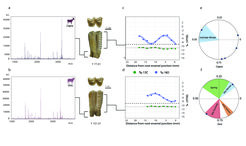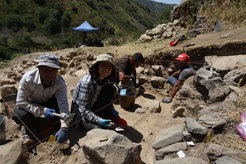New Research Questions Role of Mobile Pastoralism in Wider Socioeconomic Connections in the Chalcolithic Lesser Caucasus
A recent study published in iScience presents new insights into herding and land-use practices in the Lesser Caucasus during the Copper Age. Focusing on the high-altitude site of Yeghegis-1 in southern Armenia, the research reevaluates the long-standing views that mobile pastoralism played a central role in technological developments, resource procurement and trans-regional interactions in the region.

Previous studies have suggested that during the Copper Age or the Chalcolithic Period (5000–3500 BCE), Caucasus saw a shift toward more mobile lifestyle, transforming into a dynamic hub of innovation and connectivity. These models often link pastoral mobility to the exploitation of highland resources and significant technological developments, such as the emergence of mining and metallurgy. Mobile pastoralists are also frequently seen as carriers of technologies and cultural practices, facilitating contact between core areas to so-called margins and peripheries. However, these ideas are often based on comparisons with modern herding practices and limited archaeological evidence.
This new study takes a different approach by combining multiple lines of evidence (zooarchaeology, archaeobotany, palaeoproteomics and stable isotope analyses) to provide more refined insights into resource use, land use strategies and adaptations. The results reveal that sheep and goats formed the basis of the local economy, with hunting and small-scale plant cultivation and opportunistic foraging playing a secondary role. Crucially, oxygen, carbon, and nitrogen isotope data suggest low-mobility, settled system with year-round reliance on local highland resources, contrasting previous models that emphasise specialised forms of mobile pastoralism in the development of interregional dynamics in the Caucasus.

These findings suggest that mobility among specialized pastoralists may not have been the primary driver for exploiting highland resources or interregional connectivity. The researchers suggest that possibly a diverse range of pastoral strategies existed across the region in the Chalcolithic. Earlier research from the same site focused on sourcing of obsidian artefacts, indicated increased regional exchange during the Late Chalcolithic, despite low physical mobility of the population. This implies that, while the movement of people may have been limited, there was significant intensification in the exchange of goods, knowledge, and raw materials with other regions.
The authors stress the importance of considering multiple developmental pathways for ancient and modern societies, rather than assuming a one-size-fits-all approach to progress and modernisation. They call for future research integrating more datasets to better understand the complex interactions between subsistence practices, trade, and socio-economic dynamics in ancient societies.













